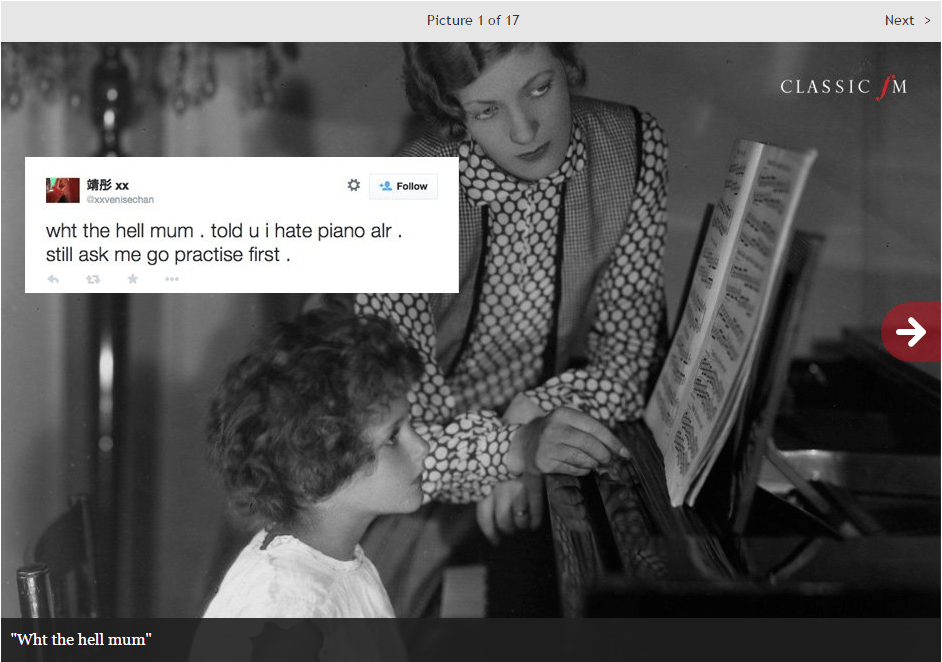Practice plays a crucial role in any piano player’s life – it’s one activity that determines how successful you will be as an instrumentalist. However, it demands time, and lots of it – and if you’re like most people, it may be difficult to find as much time to practice as you’d like.
However, this should not stop you from practicing your technique, because you can do that even when you’re away from the piano – in your car, at work and anywhere else. Here’s a neat infographic that highlights what you should do to practice your piano technique – off the keys…
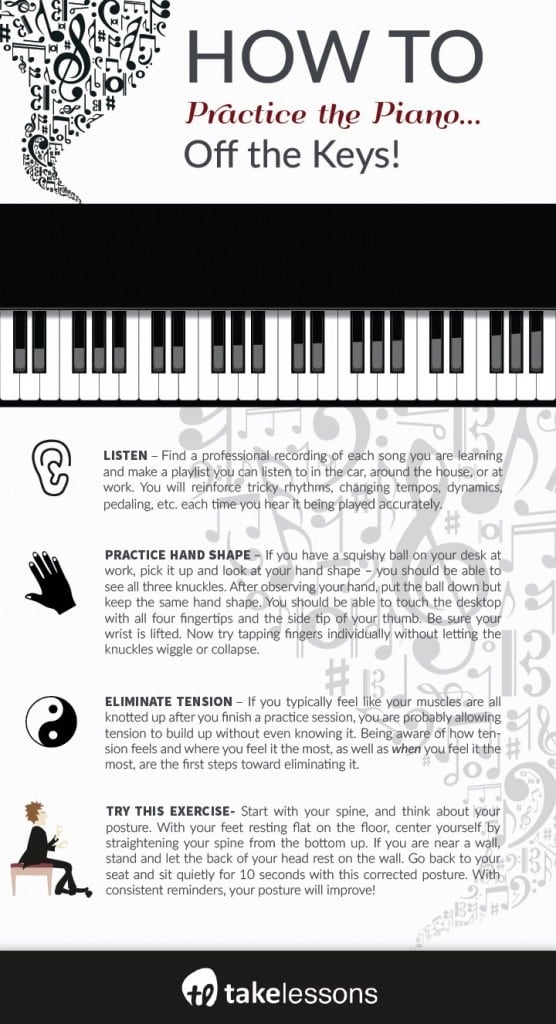
Listening
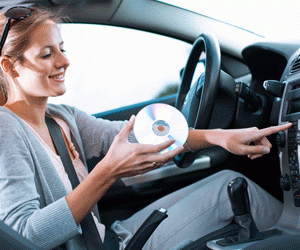
It may sound obvious, but many musicians easily overlook this – probably because it’s so easy and we believe that easy things don’t benefit us much. But there’s a lot your brain can absorb even when you’re not paying attention.
Find a professional recording of each piano song you are learning and make a playlist you can listen to in the car, around the house, or at work. You will reinforce tricky rhythms, changing tempos, dynamics, pedaling, and so on each time you hear it played accurately. Via TakeLessons
Hand shape
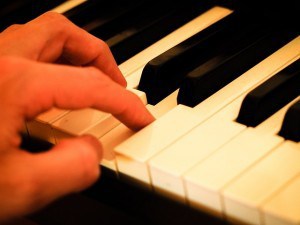
If you’ve been receiving proper training, then you should know that playing with a rounded hand shape is crucial to your piano technique. Holding a squishy ball allows you to see the three knuckles on each finger. Each knuckle plays an important role in proper hand shape, but the most important is the knuckle closest to the fingernail.
As a rule, that knuckle should never wiggle or collapse. Here are some ways to reinforce hand shape while away from the keys:
After observing your hand shape while holding the ball, put the ball down but keep the same hand shape. You should be able to touch the desktop with all four fingertips and the side tip of your thumb. Be sure your wrist is lifted.
With that good hand shape, leave your fingers touching the desk and use a little pressure to push into the desk. Release without lifting away from the desk and push in again without letting any of the knuckles wiggle or collapse. Do this without allowing tension to build up in your hands by allowing the pressure to transfer to the fingertips.
Now try tapping fingers individually without letting the knuckles wiggle or collapse.
For a greater challenge, widen your span so that the thumb and pinky are fully extended, as if playing an octave. Slide the three long fingers toward your palm until only the flat ends of the fingers are touching the desk. Tap those three long fingers on the desk without letting the knuckle wiggle or collapse, together and individually. Via TakeLessons
Get rid of the tension
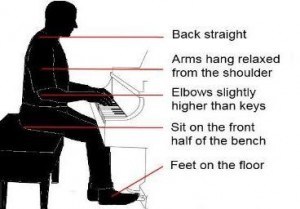
You might feel as if your muscles are knotted up after a practice session, which probably means there’s some tension in your body. It’s important to know how tension feels so you identify it. You also need to note where you feel it and when you feel it the most.
Wherever you are right now, take a moment to evaluate the tension in your own body.
Spine – Start here and think about your posture. Are you hunched over or leaning to one side? With your feet resting flat on the floor, center yourself by straightening your spine from the bottom up. If you are near a wall, stand and let the back of your head rest on the wall. This will establish the feeling of good posture. Go back to your seat and sit quietly for 10 seconds with this corrected posture. With consistent reminders, your posture will improve!
Shoulders – Breathe in deeply and exhale. Did your shoulders drop? Do they feel more relaxed now?
Elbows – Are they suspended away from your body, causing your arms to ache and fingers to stiffen? Drop those elbows and let them rest at your side.
Wrists – You should be able to lift your wrists up and down with a beautiful fluid motion. Rest your forearms on the arms of your office chair and let your hands hang from the wrists. Slowly raise your forearms, bending at the elbows and keeping your hands relaxed, letting them dangle from the wrists. You can practice this while on the phone, reading emails, or during lunch! Via TakeLessons
These important tips should also be used when you return to the keys. This will go a low way in helping your body form natural healthy habits that will enhance your musicianship.
Featured Image: Image Credit
Gonna be spending a lot of time behind the piano over the next few weeks!! #OverAndOverAgainhttps://t.co/JMP3Hj8oIapic.twitter.com/gvJWccXsQ9
— Nathan Sykes (@NathanSykes) November 15, 2015
Related Articles:
Interested in Piano Technique?
I don’t know about you, but I find all the ins and outs of piano technique fascinating.
I love that Glenn Gould could sit well below the keyboard in a position that most teachers would denounce as pretty appalling and still achieve incredible performances and be revered for evermore.
I love the flat-fingered and barely-moving but perfect technique of Horowitz that wowed audiences for years. Via Timtopham
17 people who are really struggling with piano practice right now
Best Piano Exercise for Beginners – The Miyagi Technique
The Miyagi Technique is a great piano exercise for beginners. Its the piano technique that leads to all other piano techniques, and all beginners should really learn how to do it. Via Piano Wizard Academy

